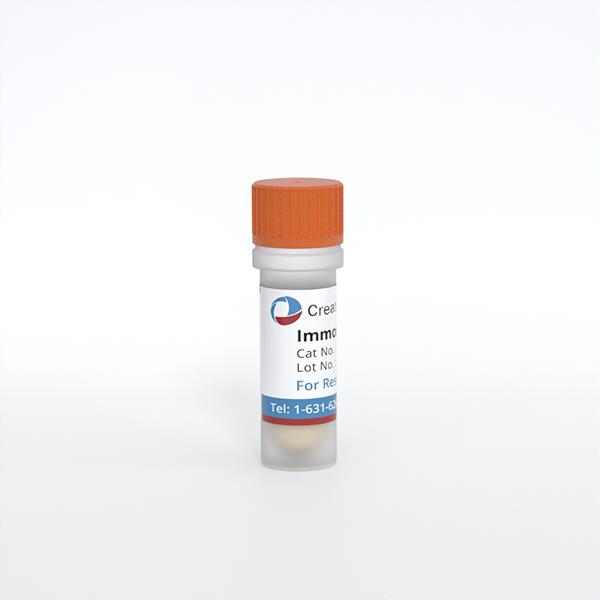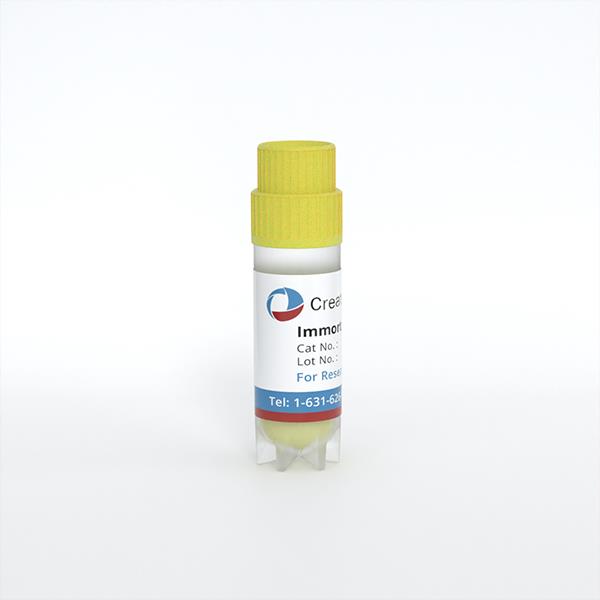
Immortalized Human Endoneurial Endothelial Cells (THEndEC)
Cat.No.: CSC-I9212L
Species: Homo sapiens
Source: Sciatic nerve
Morphology: spindle shaped
Culture Properties: Adherent
- Specification
- Q & A
- Customer Review
Cat.No.
CSC-I9212L
Description
As part of the blood-nerve barrier (BNB), the endoneurial endothelial plays a significant role in the regulation of influx and efflux of water, nutrients and xenobiotics that is needed to maintain the peripheral nerve internal microenviroment.The Immortalized Human Endoneurial Endothelial Cells (THEndEC) is a useful model for use in facilitated receptor-mediatedin vitroBNB permeability and/or kinetic studies, in addition to susceptibility to drug intoxication research as it retained specialized transporters (i.e. P-gp, γ-GT, LAT-1, CRT and MCT-1) and restrictive barrier function similar to primary endoneurial endothelial cells. The THEndEC has been characterized to show specific binding to UEA-1 lectin and the ability of Dil-Ac-LDL uptake, indicative of α-L-fucose expression and specialized scavenger receptor expression, respectively. Further studies demonstrated transendothelial electrical resistance (TEER) and permeability to fluoresceinated sodium and dextran using THEndEC, making this cell line suitable for peripheral nerve permeability studies as well.
Species
Homo sapiens
Source
Sciatic nerve
Culture Properties
Adherent
Morphology
spindle shaped
Immortalization Method
Serial passaging and stable transfection with a plamid carrying SV40 Large T antigen
Markers
GLUT-1, P-gp, γ-GT, LAT-1, CRT and MCT-1
Application
For Research Use Only
Storage
Directly and immediately transfer cells from dry ice to liquid nitrogen upon receiving and keep the cells in liquid nitrogen until cell culture needed for experiments.
Note: Never can cells be kept at -20 °C.
Note: Never can cells be kept at -20 °C.
Shipping
Dry Ice.
Recommended Products
CIK-HT003 HT® Lenti-SV40T Immortalization Kit
CIK-HT013 HT® Lenti-hTERT Immortalization Kit
CIK-HT013 HT® Lenti-hTERT Immortalization Kit
Quality Control
1) Immunocytochemistry was used to confirm the nuclear expression of SV40-LTA in the immortalized cells
2) RT-PCR and western blot were used to assess the expression of CRT, GLUT-1, P-gp, LAT-1, MCT-1 and γ-GT;
3) Transendothelial electrical resistance (TEER) assessment was performed to evaluate the biophysical property of the immortalized cells;
4) Sodium fluorescein and FITC-dextran were used to evaluate the solute permeability of the immortalized cells;
5) 1,1’-dioctadecyl-3,3,3’,3’-tetramethylindocarbocyanine (DiI) -labelled Ac-LDL was used to evaluate Ac-LDL uptake.
2) RT-PCR and western blot were used to assess the expression of CRT, GLUT-1, P-gp, LAT-1, MCT-1 and γ-GT;
3) Transendothelial electrical resistance (TEER) assessment was performed to evaluate the biophysical property of the immortalized cells;
4) Sodium fluorescein and FITC-dextran were used to evaluate the solute permeability of the immortalized cells;
5) 1,1’-dioctadecyl-3,3,3’,3’-tetramethylindocarbocyanine (DiI) -labelled Ac-LDL was used to evaluate Ac-LDL uptake.
BioSafety Level
II
Citation Guidance
If you use this products in your scientific publication, it should be cited in the publication as: Creative Bioarray cat no.
If your paper has been published, please click here
to submit the PubMed ID of your paper to get a coupon.
Ask a Question
Write your own review
Related Products
Featured Products
- Adipose Tissue-Derived Stem Cells
- Human Neurons
- Mouse Probe
- Whole Chromosome Painting Probes
- Hepatic Cells
- Renal Cells
- In Vitro ADME Kits
- Tissue Microarray
- Tissue Blocks
- Tissue Sections
- FFPE Cell Pellet
- Probe
- Centromere Probes
- Telomere Probes
- Satellite Enumeration Probes
- Subtelomere Specific Probes
- Bacterial Probes
- ISH/FISH Probes
- Exosome Isolation Kit
- Human Adult Stem Cells
- Mouse Stem Cells
- iPSCs
- Mouse Embryonic Stem Cells
- iPSC Differentiation Kits
- Mesenchymal Stem Cells
- Immortalized Human Cells
- Immortalized Murine Cells
- Cell Immortalization Kit
- Adipose Cells
- Cardiac Cells
- Dermal Cells
- Epidermal Cells
- Peripheral Blood Mononuclear Cells
- Umbilical Cord Cells
- Monkey Primary Cells
- Mouse Primary Cells
- Breast Tumor Cells
- Colorectal Tumor Cells
- Esophageal Tumor Cells
- Lung Tumor Cells
- Leukemia/Lymphoma/Myeloma Cells
- Ovarian Tumor Cells
- Pancreatic Tumor Cells
- Mouse Tumor Cells
Hot Products
